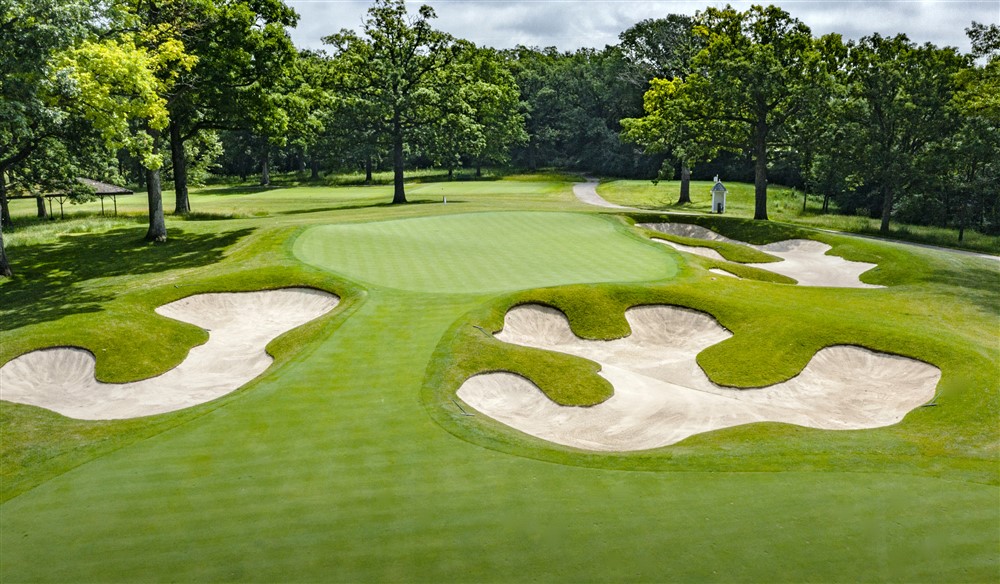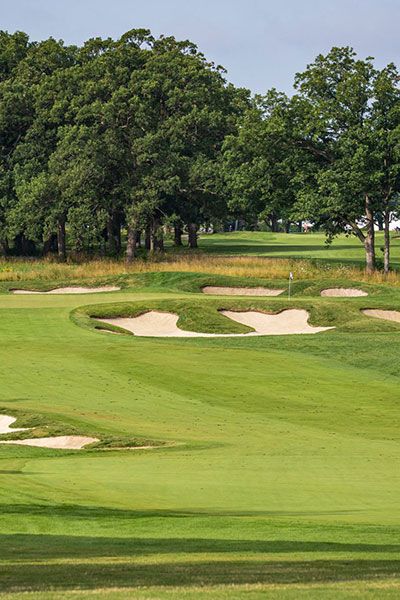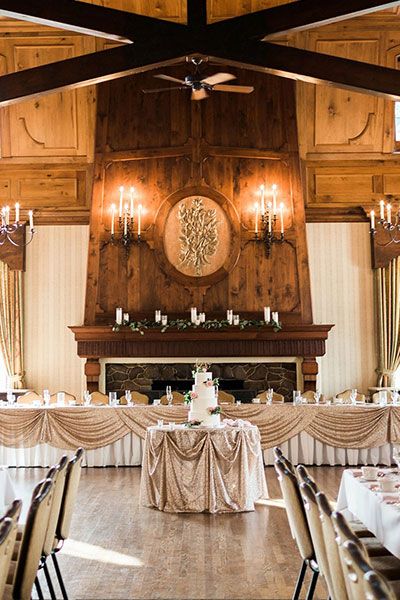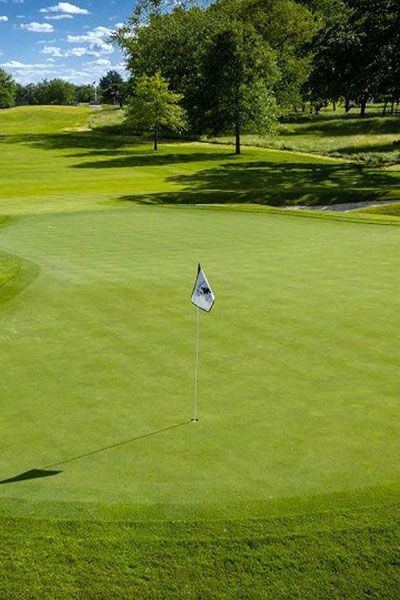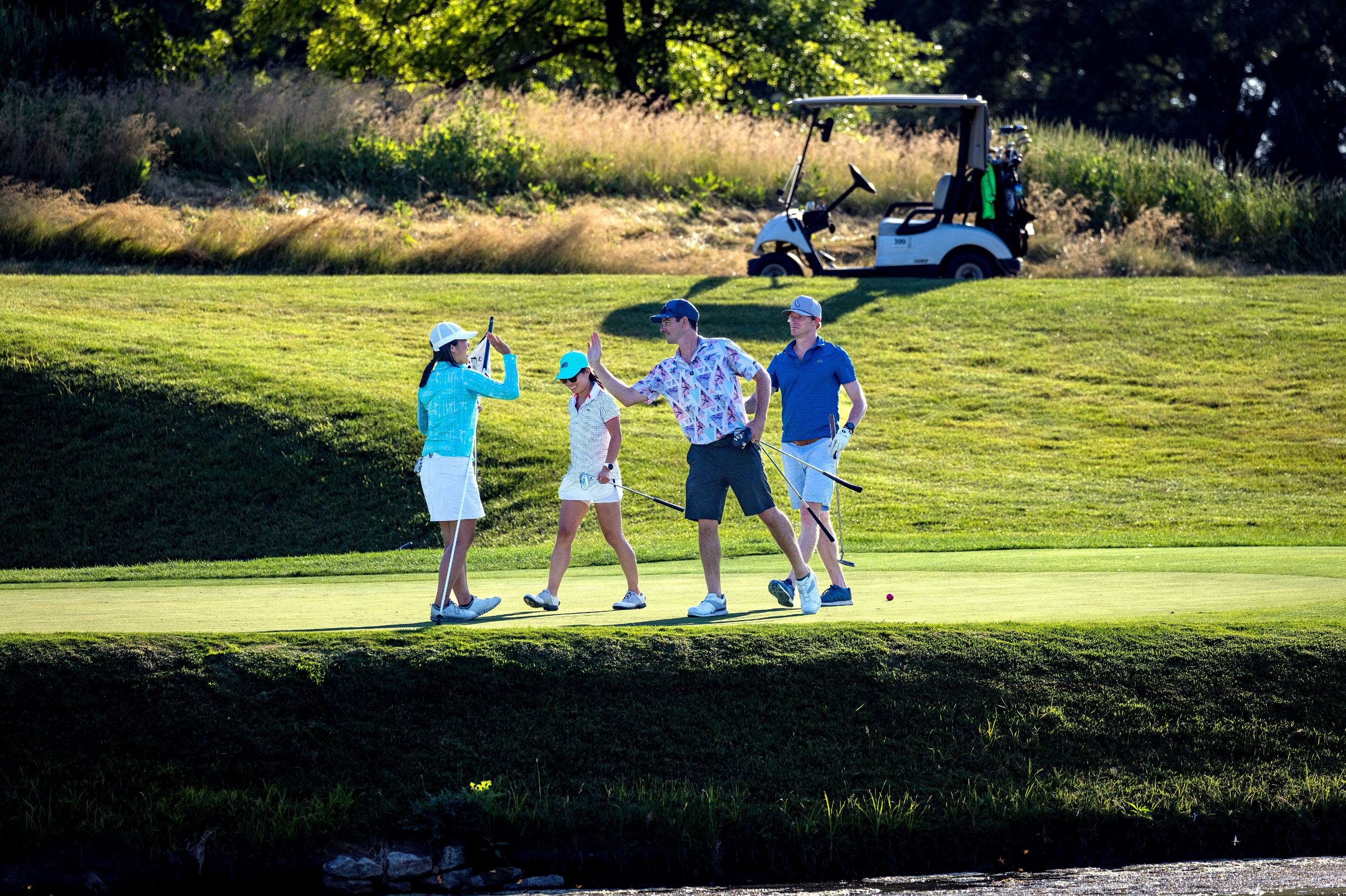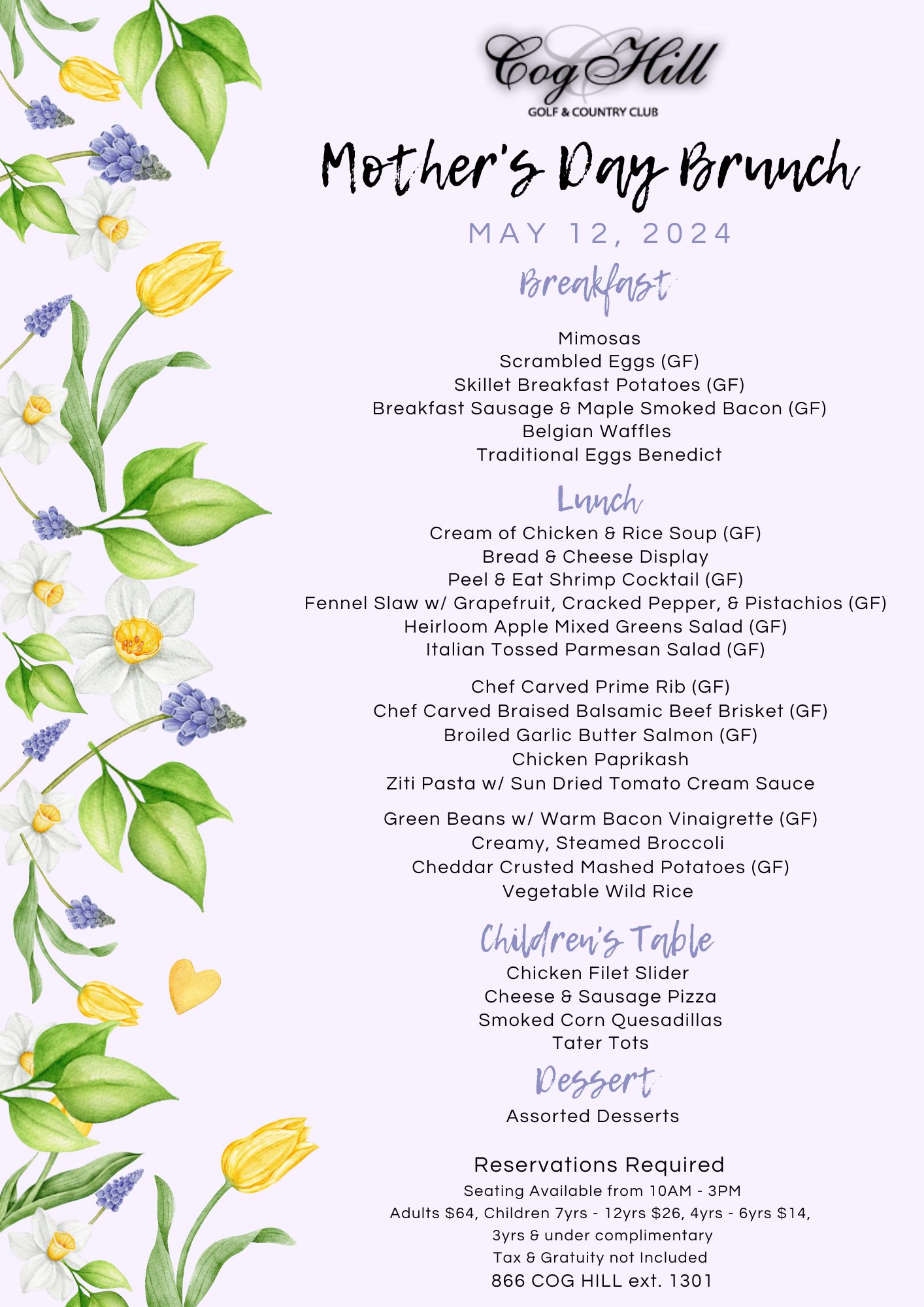Three brothers by the name of Coghill bought a farm from John McLaughlin on the west side of Parker Road in the 1920's. Like a snowball rolling downhill, this farm began the complex that today is Cog Hill Golf & Country Club.
Three electricians build a golf course...
The story begins with three brothers, John W., Martin J., and Bert Coghill who lived on a farm in Monticello, Indiana, and were hired by Western Union to string wire from their hometown to Chicago in the early part of this century. By the time they got to Chicago, they considered themselves electricians, joined the International Brotherhood of Electrical Workers (Local 134) and began the Coliseum Electrical Company at 5422 South Halsted Street in 1920. They expanded and moved across the street to 5441. Most of their work was residential, rewiring homes that formerly were only gas.
In the early twenties, they went to a golf outing sponsored by the electrical union at Oak Hills Country Club in Palos Heights. None of them had played golf, but they thought the game looked like fun, was easy, and they had a good time. They decided "we're plungers" and began looking for a site to build a golf course. Their search brought them 28 miles Southwest of Chicago to Lemont.
The Village of Lemont is located on a bluff that overlooks the Des Plaines River Valley. The hills and valleys of Lemont were carved out by the Wisconsin glacier during the last ice age. The change in elevation between the floor of the valley and the hills of Cog Hill are a striking contrast to the plains of Illinois. This land reminded the Coghills of land around their birthplace. They found the McLaughlin farm East of town and bought it with money they borrowed from Orland State Bank. Next, they hired David McIntosh, who owned Oak Hills, to build them a golf course.
Building and maintaining a golf course today is a scientific operation. In 1926-27, a golf course was built by manual labor and horse-drawn equipment. Men filled a scoop with two handles to move dirt and the horse would pull the scoop to an elevation they created and the men then molded and sculpted the dirt into a green. Mowers were pulled by horses. The back-breaking work produced the original Cog Hill No. 1. It opened on the 4th of July weekend in 1927.
To complement the course, the Coghills constructed a large, beautiful clubhouse. The building housed a great dining room with a 24-foot ceiling, massive wood beams, and an impressive stone fireplace. The adjoining lounge or sitting room also had a large fireplace and was complete with a grand piano. A small bar-ticket counter straddled the entrance foyer and connected the dining room and lounge area. In the European tradition, the clubhouse had 14 guest rooms for "weekend vacations or more extended periods." A women's locker room was located on the main floor just inside the clubhouse and the men's was downstairs and contained a small bar.
Outside the clubhouse, the owners touted another unique feature - the children's playground. It was billed as having the "last word in juvenile amusement devices." A maid was in attendance to insure the care and comfort of the children while their parents enjoyed a game of golf - child care 1930's style.
Cog Hill also had a Chicago link in those days. Reservations for golf were taken at the Boston Store, which, at that time, was one of the city's leading department stores. Another key to their success was the Chicago & Joliet Electric streetcar system that ran between Argo and Joliet, giving their customers easy access to the course. In those days a round trip ticket between Lemont and Joliet cost only 25 cents.
The course was busy from the very beginning, and soon they bought 160 acres on the east side of Parker Road from the Reed Family. David McIntosh and Bert Coghill worked together to design and build the original Course No. 2, which opened in the fall of 1929-just in time for the Black Thursday (October 24, 1929) crash of the stock market and the Great Depression. Despite the twelve years the depression persisted, the golf course prospered and the people who had money continued to make their way to Cog Hill.
Joe Jemsek - a caddie becomes an owner......
About that time, along came Joe Jemsek, a young man from Argo who began caddying at the age of 6. He had caddied at Laramie, Acacia, and Palos Hills before coming to Cog Hill when he was 15. He became a golf professional at 17 and joined the tour. Despite scores that kept him near or under par, he didn't want to be a tour player. He wanted to be a golf course owner.
One day while caddying for Marty Coghill, Marty asked him what he thought of the place. Joe told Marty, "It's the most beautiful place I've ever seen; some day I'm going to going to own it." Marty related the story to his playing partners, who just happened to be his brothers. They all had a good laugh, but Joe kept his word. He left the tour and came back to Cog Hill where he parked cars, caddied, worked behind the desk, on the golf course, and in the kitchen, all while giving lessons and working as caddie master. When he was denied a raise, Joe moved to St. Andrews G&CC (West Chicago, IL) where he taught and ultimately purchased in 1939 for $40,000. Joe had $25,000 in the bank from money he had saved and was able to get a loan for 4%.
During his years at St. Andrews, he remained friendly with the Coghill brothers, visited them frequently and often played cards with them. In 1951, after John and Bert passed away, Marty Coghill asked Joe to buy the two courses. He did so for $400,000 even though Marty was offered $500,000 by another outfit. Joe said Marty chose him because he knew he would get paid. They had an agreement that the course would continue to be called Cog Hill. Not willing to break up a winning team, Joe also kept the golf professional, Heinie Sick and the groundskeeper George Dahlman. George Dahlman remained the greenskeeper until his death in 1973. Heinie Sick continued to be the head professional for another 42 years. Poor health forced him to retire in 1993, two years before his death.
Joe Jemsek is the sky-ride golf champion of the 1934 Chicago World's Fair. He drove a golf ball 501 yards into Lake Michigan from the sky-ride tower, 168 feet in the air. Staged in the interest of science and measured by the U.S. Navy engineers, Jemsek took the trophy offered by a local restaurant, defeating nine local golf professionals.
In 1963, Joe hired Dick Wilson to build a third course. The original layout of Course No. 1 had the front nine finishing at the clubhouse. This created both a problem and a solution for the new course. The problem was that there was not enough room to have the new course start and finish near the existing clubhouse.
The solution was to "break-up" the original Course No. 1 layout. It was accomplished as follows: No. 1 would be composed of the first four holes of the front nine, plus nine new holes, and then return to the clubhouse on the last five holes of the original front nine. The new course, No. 3, would start out with the first four holes of the original No. 1 back nine, plus nine new holes, and then return to the clubhouse on the last five holes of the original No. 1 back nine. The two new layouts turned out to be of similar length and difficulty. Over the years, the new parts of the courses matured and blended into the old, and now most of the remodeled feeling has gone away.
Still concerned that he didn't have a course to equal Medinah No. 3, Joe asked Dick Wilson to build a fourth course, good enough to hold a national Open or PGA Championship. Wilson complied, but unfortunately died before finishing, and the course was completed by Joe Lee. The collaboration was so successful that No. 4 is ranked among the top courses in the United States by Golf Digest, Golfweek, and Golf Magazine. Joe nicknamed the course "Dubsdread" after a course in Orlando, Florida where he spent his winters as a young pro. Dubsdread translates to "dubbers beware" and give players a warning of the test of golf that awaits them.
Over the years, many National Championships have been contested at Cog Hill. They include the 1970 and 1989 USGA Men's Public Links Championship, the 1987 United States Women's Public Links Championship, and the 1988 Western Junior. In 1991, the Western Golf Association brought the Western Open to Dubsdread, bringing the top PGA Tour stars, such as Tiger Woods, a five-time winner.
The name of the tournament has changed over the years, but the cause has remained the same- providing college scholarships to deserving caddies. Recongnized as one of the premiere events on the PGA Tour, Cog Hill has grown to be a favorite of many of the touring professionals. The list of National Championships also contains the 1997 United States Amateur Championship which was contested over Course No. 2 and Course No. 4 in August of that year. In addition, Cog Hill has hosted many qualifiers for both U.S. Opens and Men's Public Links Championships.
In the spring of 1979, Cog Hill revealed its new Driving Range/Learning Center. The facility was designed by Rocky Roquemore and had realistic target greens with bunkers. This, combined with well-groomed tees, made the need for practice feel like golf. The range was long enough to accomdate players hitting from both ends. The public end later added covered hitting areas complete with heaters for year-round practice.
The Learning Center, located at the other end of the range, provided space for golf schools and private instruction. This area also included three special greens; one devoted to putting, one to chipping, and one for bunker play. Among the travelling schools to teach at Cog Hill were Golf Digest, Dave Pelz, Nicklaus-Flick, and David Leadbetter. Cog Hill's own schools and the junior golf program also make use of this space.
Cog Hill's junior program began in earnest in 1987. Working with the Lemont Park District to provide quality golf instruction for the youth of the area was the priority. The program included group instruction, a Pee Wee league, a nine-hole league, an 18-hole league, and the Sizzler Golf tournament. The junior program annually introduces over 200 boys and girls to the game. Cog Hill was recognized for its innovation and contributions to junior golf when it received the prestigious Junior Development Awawd- Club Winner, from Golf Digest Magazine in 1991.
Cog Hill is one of the economic engines that drives Lemont. At peak season, over 400 people are employed on the golf courses and in the clubhouse to assure a great time to as many as 1200 golfers per day and the myriad of receptions, weddings, banquets, and business meetings regularly accomdated. Much of that payroll is spent in and around the Lemont area.
Joe Jemsek has received many honors. Almost single-handedly, he brought golf for the public player up to the standard of the private club and he proved that he could be successful doing it. Today, there are public courses across the country that never would have been built had not Joe Jemsek shown the way. With all this in his life, Joe Jemsek was most proud of being a Class A member of the PGA since the early forties, of receiving the PGA Professional Golfer of the Year award in 1991, and being the first to represent public golf on the Executive Committee of the United States Golf Association (1988-1989).
Cog Hill has received many coveted honors throughout its years. Dubsdread has also received many industry accolades annually, among them are being name No. 1 on the list of Best Courses You Can Play in Illinois by Golfweek, Top 100 in the U.S. by Golf Magazine, and America's 100 Greatest Public Courses by Golf Digest.
When speaking of Dubsdread, Joe said, "We built this course in 1964 to be the best course in the United States. We've had many USGA qualifying rounds, as well as state and district events, and now the Western Open and the U.S. Amateur and it has always stood up, right through 1996. Our courses have received many honors, but what is most important to my son and I is when our customer comes to play, we provide a quality round of golf on all four courses. We continue to try and make everything better at Cog Hill, every year." Jemsek Courses have the service of 22 PGA and LPGA teachers and six high schools call Jemsek courses home.
Joe Jemsek died April 2, 2002. He was a widower and left two children, Frank and Marianne (Mrs. Gerard Hinckley), seven grandchildren, and ten great grandchildren. Joe's legacy for public golf continues today with Frank and his daughter Katherine operating Cog Hill and Pine Meadow Golf Club (Mundelein, IL) and Joe's daughter Marianne operating St. Andrews Golf and Country Club (West Chicago, IL).
Dubsdread has been the site of the PGA Tour's Western Open (1991-2006) and the BMW Championship (2007, 2009-2011).
Cog Hill Golf & Country Club, which is a part of Jemsek Golf Facilities is now officially located in Palos Park, IL as a result of a recent annexation. For now, our address remains as Lemont but we are excited and proud to be affiliated with the Village of Palos Park and their future planning!


